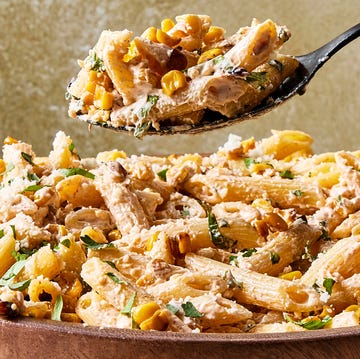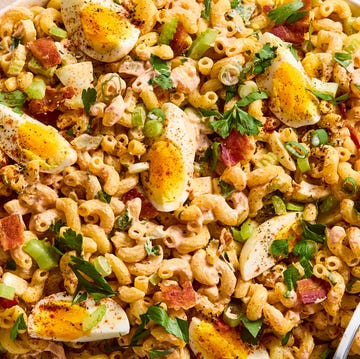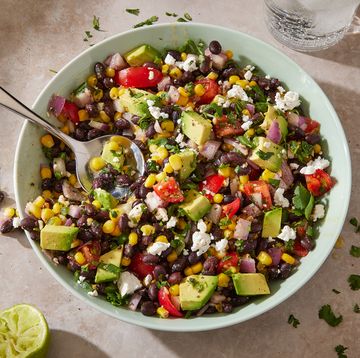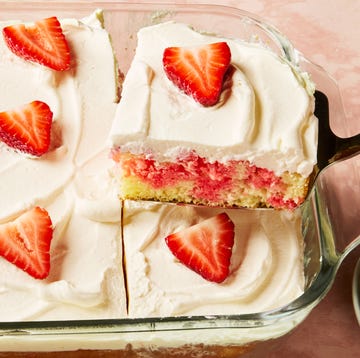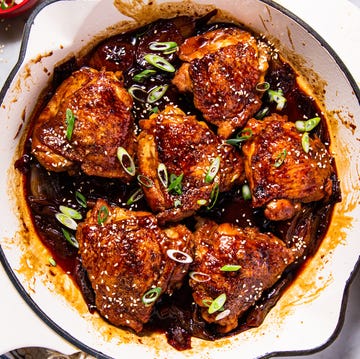If you’re browsing the baking aisle of your grocery store, there’s a chance you may be overwhelmed by all the different types of flour. Never fear—there are only a few that you really need to be familiar with. Senior Food Editor Makinze Gore is our resident baking expert, and she only keeps three flours on hand at all times: bread flour, cake flour, and all-purpose flour.
The primary difference between these three flours, in terms of how they affect your baking, is their protein content, which is what develops the gluten and gives structure to your baked goods. Depending on the amount of protein in the flour, your bakes could have more height, spread out more, or be fluffier. If you’re deciding what type of flour to use for your next baking project, keep reading for Gore’s flour rundown on how they are different and what they're used for.
All-Purpose Flour
All-purpose has around a 9-12% protein content and is probably our most reached-for flour here at Delish. Because it has a medium amount of protein, it strikes a great balance between the tenderness that cake flour brings and the gluten development bread flour achieves. It’s called all-purpose for a reason: It’s a versatile flour that’s great for all kinds of baking projects, from biscuits to quick breads to chocolate chip cookies. If there’s one flour out of the three you should keep stocked at all times in your pantry, it’s all-purpose.
Bread Flour
Bread flour has a 12-15% protein content (read: it’s who you call if you need some serious gluten development). While it works for similarly to all-purpose flour in simple baked goods like cookies, bread flour will spread more, and create a smoother texture on top. This flour is best used when you’re looking to bake, well, bread! When you need chewy, well-structured baked goods like pizza dough, English muffins, or sourdough, bread flour is your guy.
Cake Flour
With the smallest percentage of the bunch, cake flour has a 6-8% protein content. Cake flour is great for baked goods where you want to have a fluffier, taller result: think cakes and cupcakes. When used in chocolate chip cookies, the finished cookie stays around the same shape and size as the piece of dough before it was baked. The cake flour puffs the cookie up, making it fluffier, softer, and more tender. That's because cake flour absorbs more moisture, so in cookies, it will absorb the butter, causing them to stay tall and not spread. We use it in many of our cake recipes, including our vanilla cake and our Chantilly cake for a tender, fluffy, and moist crumb.
If you don’t have the cake flour your recipe calls for, try this: For every 2 cups cake flour in your original recipe, sub in 1¾ cups all-purpose flour that’s been whisked with ¼ cup cornstarch.
Gore’s last tip: Don’t be afraid to mix and match to get the structure that you need! Use a combination in your baked goods when you need a bit of a protein boost, or make copycat Levain Bakery Cookies to try your hand at using a mixture of cake flour and all-purpose.

